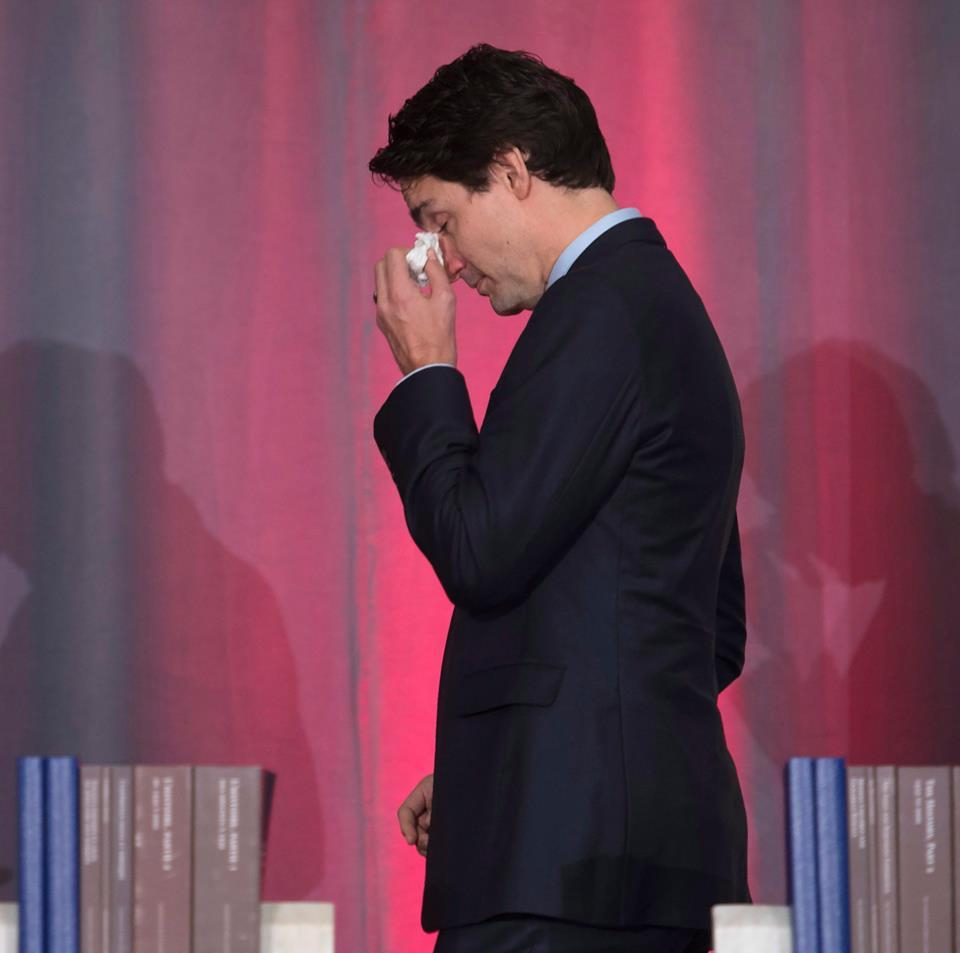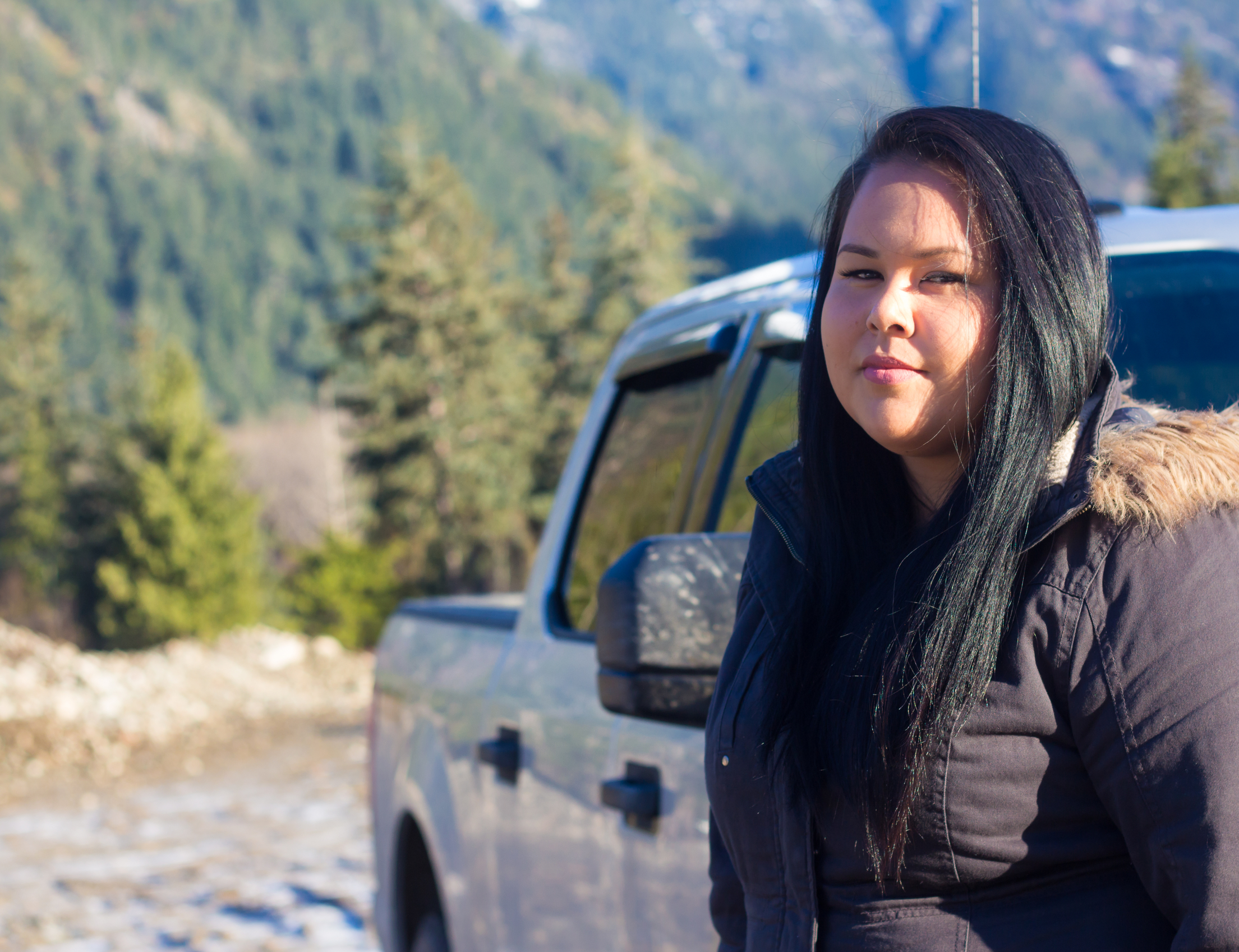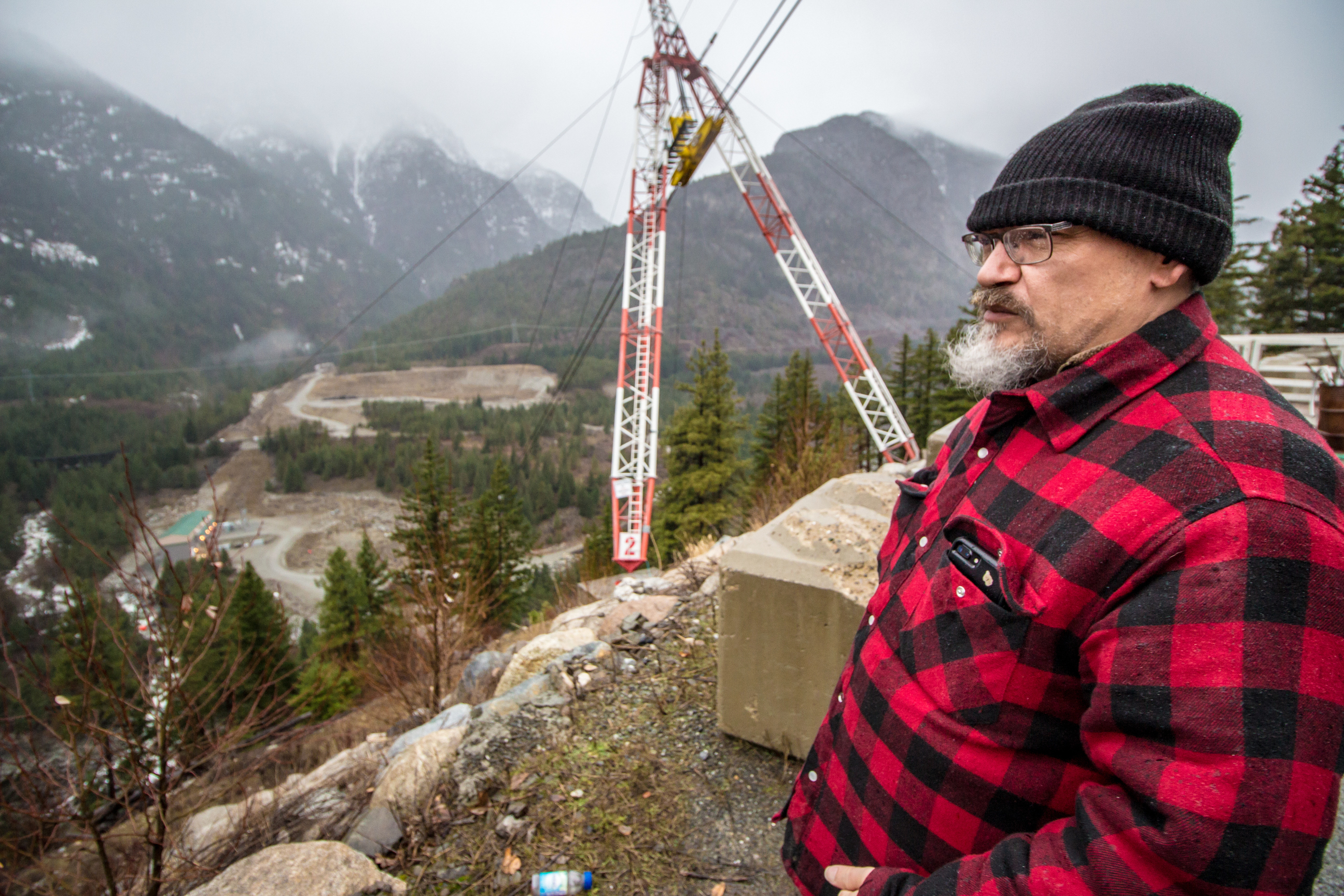Support strong Canadian climate journalism for 2025
Canada is in an uncomfortable space today. For over 150 years, this country has been in a push/ pull dynamic relationship with First Nations people. At the center of First Nations progress and development has been a constant ‘pushing’ of Canada towards the development of legal recognition as it is entrenched within the constitution of this country.
The ‘pull’ dynamic, meanwhile, has taken the form of years of government policy and practice. These policies and practices have formed the systemic invisibility of First Nation peoples that has been expressed through the continued denial, resistance, exclusion, and rejection of Indigenous rights and economic exclusion over time. This push/pull dynamic centers Canada’s current and emerging relationship with First Nations peoples.
Is Canada ready for the new reality?
Likewise, the ‘push’ for recognition by Indigenous peoples has taken the form of over 250 court victories, many in the resource sector, all of which Canada lost through the systemic reluctance of recognition of Indigenous rights. This push/pull dynamic has created a new legal and economic space for First Nations people. This is the emerging space that has been created for our modernity by Indigenous peoples leadership within this country today.

Today, we see the establishment of ‘recognition’ as both a tool and as a process to rebuild the Canadian Indigenous relationship. Today requires a new approach to address the slow yet emerging realization of the need to validate ‘recognition’ as a process that is at the very heart of the constitution of this country. This is the uncomfortable space. But is Canada ready?
In February 2018 in the House of Commons, Prime Minister Justin Trudeau announced the establishment of a ‘Recognition and Implementation of Rights Framework.’ This framework outlines Canada’s intended leadership in establishing a new pathway for Indigenous recognition. He stated: "For too long, Indigenous Peoples in Canada have had to prove their rights exist and fight to have them recognized and fully implemented. To truly renew the relationship between Canada and Indigenous Peoples, the Government of Canada must make the recognition and implementation of rights the basis for all relations between Indigenous Peoples and the federal government."
Today, through the announcement of the development of this Recognition Framework, it has the potential to form a new reality for the future of Indigenous relations of this country.
From 1867 with the establishment of Canada, it took 115 years for Indigenous peoples to gain full recognition within the Constitution in 1982. From that time and with the consciousness of the day, it is only now, 32 years later, that we see the potential application and actualization of ‘recognition’ as a framework for the continued development of Canada’s modern relationship with Indigenous peoples.
In recent years, the word reconciliation has entered mainstream Canadian vocabulary and consciousness.This announcement builds upon the ongoing Government driven reconciliatory efforts. These immediate efforts include:
1) The endorsement of the United Nations Declaration on The Rights of Indigenous Peoples
2) The ongoing commitment to implement the Truth and Reconciliation Commission’s 94 Calls to Action
3) The creation of a Working Group on the review of all laws and policies related to Indigenous Peoples
4) The establishment of the 10 Principles Respecting the Government of Canada’s Relationship with Indigenous Peoples
5) The establishment of the Recognition of Indigenous Rights and Self-Determination tables where the Government and Indigenous Peoples are working in partnership by identifying priorities.
While for many this ongoing work is just a start, and to some it is not strong enough nor fast enough, this is the work of today in rebuilding the Indigenous relationship. From the long history of systemic denial, today First Nations are taking our rightful place and role within this country. Framed in reconciliation, recognition as a process requires new actions, new beliefs and new approaches.
Uncomfortable truth
This country is unquestionably in an uncomfortable space. As noted by Minister Carolyn Bennett of Indigenous Relations and Northern Affairs upon the announcement of the Recognition Framework, "we begin the engagement that will finally address Canada’s uncomfortable truth – centuries of colonial practices have denied the inherent rights of Indigenous peoples." And while this recent announcement has sparked lively debate, skepticism reigns, and fear and doubt rear their heads with the question that many Canadians are asking – What does this mean?

At the center of this truth that Minister Bennett is referencing is the requirement for new thinking, new approaches, and new rules. These form the foundation for re-setting a new relationship with First Nations peoples today. Further, this supports the emerging realization of a new reality for the next 150 years of Canada within the possibility of legal and economic recognition framing the pathway forward.
What is exactly is the source of this discomfort? Why does the idea of ‘recognition’ cause discomfort? Is it because recognition is already defined within the Constitution? Is it because of the long history of broken treaties? Or is it the over 250 court cases that First Nations have won through the absence of recognition? Or because the ‘right to an economy’ has yet to be defined today? Is it because most on-reserve Indigenous children live in poverty in Canada? Or because it might have been cheaper to ‘recognize’ First Nations rights sooner? Is it possible it is because maybe Canada has outgrown the Indian Act? These questions all form the foundation of this uncomfortable space that recognition as a tool and a process can begin to address.
Indigenomics is a new word. Indigenomics is modern Indigenous economic design. It is the development and growth of today’s Indigenous economy. It is a statement of claim of Indigenous space in modern existence. Indigenomics is about building the pathway forward. This proposed transformation of approach of formalizing recognition will require three core reference points- the changing of perceptions, then a shift in thinking, and finally a shift in actions. Canada must recognize it is in both a legal and an economic relationship with Indigenous peoples. It is time to get comfortable with being uncomfortable.
The Canadian Indigenous economy is currently estimated to have grown to over 32 billion dollars, according to a 2016 TD measurement report. This has occurred without any mechanism for the formal actualization of ‘recognition.’ This successful development has also occurred in spite of the Indian Act. To begin to ‘recognize,' Canada must make the connection between the legal and economic relationship it is in with First Nations people — this is at the heart of the growing Indigenous economy. We must pay equal attention to the levers for growth of Indigenous business and the growth of the Indigenous economy through this Recognition Framework.
Looking through the lens of an Indigenomics framework of 4 R’s- while the first R is for Recognition, the other three R’s are Rights and title, Representation and Resources. Collectively, these 4 R’s form the foundation for economic reconciliation and a means to address todays new government mandate of this Recognition Framework. These R’s form the Indigenous power center of today. This proposed legally driven Recognition Framework must work to address each one of these R’s.
It is worth repeating that this new Recognition Framework must be clearly demonstrated not only in the legal field, but also the economic field. It must include the right to land, to resources, economic benefits and free prior and informed consent. It is through the implementation and not just the winning of rights and title, through the establishment of inclusive First Nation representation, as well as First Nations having say and benefit over resources that will form the operating points for actualizing this Recognition Framework in both the legal and economic field. Is it possible that the cost of doing nothing has now outweighed the risk of doing nothing?
It is important for Canadians to understand that every single one of the Truth and Reconciliation calls to action are literally a call out and an invitation for a different future reality in the Indigenous/Canadian relationship. It is out of the margins of this country that recognition can serve as a tool to address this uncomfortable space, the uncomfortable truths of this country. It is out of the negative statistics within which First Nations peoples realities are centered. Through actualizing recognition, the lines of marginalization can be moved towards equality, inclusion and participation.
If we look to cases currently being tested in the Supreme Court of Canada, a clear example is the Mikisew Cree First Nation. The Mikisew in northern Alberta wants First Nations to have a say in laws concerning treaty rights.This case could potentially rewrite how laws are made in relation to Treaties, redrawing how laws are made across Treaty 1- 11 territories which make up a vast majority of Canada. This is an example that draws on the push/pull dynamic. The Mikisew have been systematically removed from decision-making across time, yet now they are providing the leadership for the potential for inclusion that can create a clear shift in this country that will require a new process for decision-making in how laws are made and inclusive, equal leadership based in recognition. The Mikisew people are working towards pushing Canada into a new reality: that Indigenous peoples must be included in law-making. We are a powerful people.
A second example is Stk’emlupsemc of the Secwepemc Nation (SSN). In filing a title claim in B.C. Supreme Court to lands owned by KGHM Ajax, the Tk’emlups and Skeetchestn Indian bands have started what may become a precedent-setting court case. For asserting title in court, this could establish that the Nations have the right to dictate use on its land — including resources. This push dynamic has the potential for the Nations to address the existing status quo of the current unilateral process of decision-making on natural-resource development as identified on SSN lands, pushing Canada into a new reality. We are a powerful people.

As a final example, we look to the Nuu-chah-nulth peoples on the coast of Vancouver Island (Ahousaht et al. vs. Canada) who won the right to a commercial fishery. With eight years of negotiations, and an ongoing court case, Canada today still minimizes Indigenous rights and holds our people in historical limitations rather than a modern right to a commercial economy. Essentially, the expression of recognition of this right to a modern First Nation based commercial fishery means everybody has to move over at the economic table. It is an example such as this that it can be demonstrated that First Nations are winning through legal means our seat at the economic table of this country. Nuu-chah-nulth people have pushed Canada into a new reality — we have a right to a modern commercial transactional function. We are a powerful people.

All these examples, bring us to today’s new reality of First Nations taking our rightful place and role within this country. Recognition today can be a quickening, a focused intent on economic empowerment, equality and inclusion. Recognition in this country must take the form of a new narrative that Indigenous peoples resilience and leadership have shaped Indigenous business and economic success of today. Can the recognition of First Nations rights become the new normal of Canada?
Minister Bennett outlines: ‘We invite all Canadians to work to better understand the damage done by our colonial past and join us in the journey of reconciliation.’ We a crossroads as a country. This is the uncomfortable space, to address the uncomfortable truths that formed this country. We can acknowledge the discomfort and we can build something different. It is time to get ready. It is time to think of a time in the near future where we can tell our grandchildren and our great children of the time when Canada still had the Indian Act and that it was bad for everyone. This is the story of our time as a country. Let’s build on this new truth of this country that Indigenous peoples are powerful people.
Is this the time that Canada will finally get it? Let’s get uncomfortable and let’s have the courage to do this together.







Comments
What makes me disgusted to be a Canadian.
Canada sued over years of alleged experimentation on indigenous people
https://www.theguardian.com/world/2018/may/11/canada-indigenous-people-…
Great work Carol Anne and thank you NO for featuring her work. I love the idea of world indigenous trading network--indigenous to indigenous --and would love to read more about that as well as hear more about the work of indigenous women entrepreneurs.
And a lot more has happened since May 2018! Now our appellate courts are forcing the federal and provincial governments to accommodate the indigenous right to free and informed consent. But what does accommodate mean? How can a government accommodate for the loss of species caused by an oil spill or increased tanker traffic. At least the governments have to openly and honestly meet with First Nation peoples and discuss treaty rights and resource exploitation, and make corporations accountable for their violation of human rights.